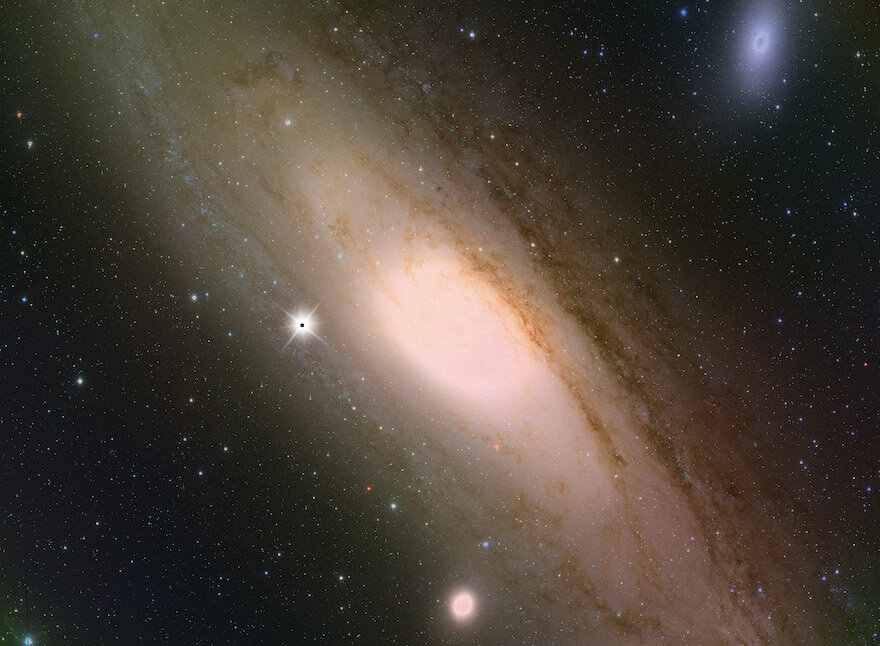
# Scientists Discover a Rare Gamma-Ray Flare From M87 Black Hole
In a remarkable cosmic occurrence, astronomers have detected a phenomenal surge of high-energy gamma radiation coming from the black hole located at the center of M87, the vast elliptical galaxy in the Virgo cluster. This astounding revelation has uncovered new dimensions of the mysterious mechanisms behind black hole behavior and their vigorous relativistic jets, signifying a crucial advancement in comprehending these astronomical giants.
## A Decade-Long Cosmic Silence Disrupted
M87, renowned as one of the brightest galaxies in the cosmos, became a staple in scientific literature when its black hole was famously captured by the Event Horizon Telescope in 2019. Enhancing its notoriety, this latest finding marks the first gamma-ray flare from M87 in over ten years. The flare was identified during an extensive global observational initiative conducted from 2017 to 2018, involving over 25 ground-based and space-based telescopes that together spanned the full electromagnetic spectrum.
“Black holes such as M87’s are fundamentally unpredictable, and witnessing a flare like this heavily depends on precise timing and teamwork,” stated Kazuhiro Hada, an astrophysicist at Nagoya City University who led the radio observations.
The flare, which persisted for a short duration of three days, emerged from a relatively small area near the giant’s event horizon—the limit beyond which nothing, not even light, can escape. The area’s compactness, approximately three light-days across, underscores the accuracy attained during this groundbreaking research effort.
## Exploring the Vast Scale of M87
To truly grasp the magnitude of M87’s black hole and its related phenomena, consider this: the relativistic jet that streams from the black hole stretches across tens of millions of times the dimensions of the event horizon. For context, this size contrast resembles comparing a singular bacterium to a blue whale. The immense scale of these jets illustrates the substantial energy output of active black holes, which function as cosmic powerhouses.
In spite of its enormity, the ultra-rapid variability of the gamma-ray flare indicates it originated from a region only about 10 times larger than the black hole itself. “The quick transformations we detected in gamma rays underscore just how compact and energetic the emission area is,” remarked Daniel Mazin from the University of Tokyo’s Institute for Cosmic Ray Research. Interestingly, while the variability in gamma rays was sharp and pronounced, it did not manifest as prominently across other wavelengths. This difference provides an intriguing hint regarding the particle acceleration processes involved.
## Unraveling Black Hole Mysteries
Supermassive black holes are enveloped by accretion disks and regions of relativistic plasma. Occasionally, these regions launch high-velocity jets of particles and energy, but the precise physics underlying these jets has consistently puzzled scientists. With this recent observation, the pieces of the puzzle are starting to align.
Professor Sera Markoff of the University of Amsterdam underscored the significance of these discoveries: “One of the persistent enigmas in astrophysics is how and where particles gain speed within black hole jets. With the data obtained from this gamma-ray flare, we can now connect observations close to the event horizon itself with particle acceleration occurrences in the jet. This enables us to test and enhance long-standing theoretical frameworks regarding jet development.”
By merging imaging methods that capture radio and visible light with gamma-ray observations, researchers are gradually unraveling the complexities surrounding jet formation and dynamics. The findings could have extensive consequences for our overall comprehension of cosmic phenomena, including the influence of black holes in sculpting the architecture of galaxies.
## Glossary
**Gamma-ray**: The most potent form of light within the electromagnetic spectrum, characterized by wavelengths shorter than X-rays and capable of transporting energy billions of times more than visible light.
**Event Horizon**: The “point of no return” surrounding a black hole where gravitational forces are so powerful that nothing, including light, can escape.
**Relativistic Jet**: A concentrated stream of particles, often traveling at speeds close to that of light, expelled from the areas surrounding black holes, neutron stars, or other supermassive entities.
## Test Your Knowledge!
1. **How long had it been since M87’s previous gamma-ray flaring episode?**
Answer: Over ten years.
2. **How many telescopes took part in the observation campaign?**
Answer: More than 25 ground-based and space telescopes globally.
3. **What is the approximate size of the gamma-ray flare region in relation to M87’s black hole?**
Answer: About 10 times the scale of the central black hole.
4. **How does the size of M87’s relativistic jet compare to its event horizon?**
Answer: The jet is tens of millions of times larger, representing a difference of 7 orders of magnitude.
—
As our comprehension of black holes deepens